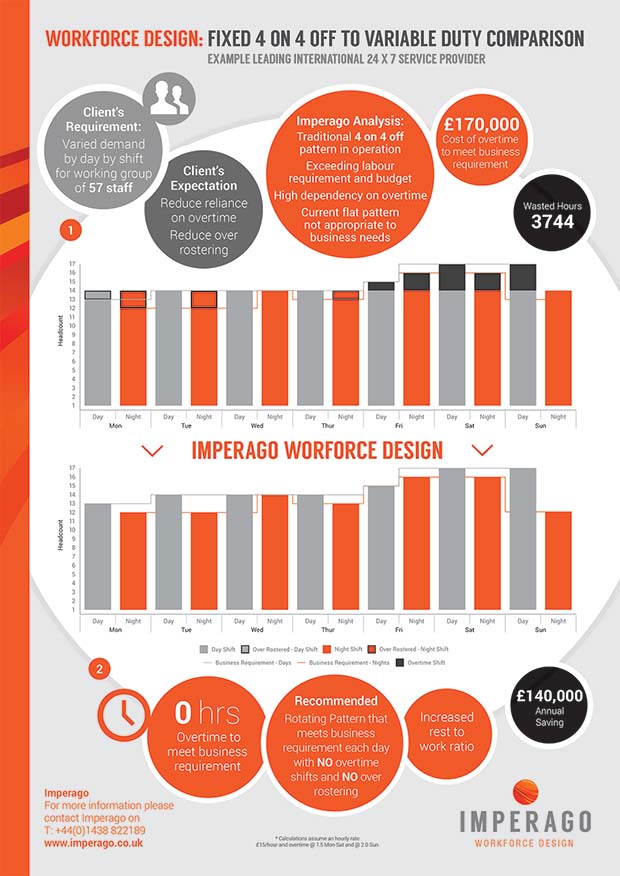Imperago has announced the launch of its new Workforce Design solution, developed to help logistics, supply chain and manufacturing organisations create ideal work pattern and shifts that optimise existing workforce management systems. The new solution addresses the challenges that many organisations with 24/7 operations face in balancing staff working patterns with business needs. Imperago Workforce Design can be standalone or work with existing systems, helping companies to create shifts to meet working legislation, staff work/life balance, manage staff fatigue and financial and operational demands. In live customer pilot testing Workforce Design saved £170k (7.5%) on one shift for an airport service provider simply by removing the need for overtime, while also increasing the rest to work ratio.
 Imperago Workforce Design ensures that organisations meet employee compliance management, such as working time directive, hours of service, and rest entitlements. It also provides a ‘what if’ planning feature that enables managers to experiment with different scenarios so that they can see the financial implications before making changes to staff working patterns or being able to respond to sudden changes. For example, peaks in demand associated with Black Friday or an increase in vehicle recovery staff to meet car breakdowns in holiday periods or adverse weather conditions.
Imperago Workforce Design ensures that organisations meet employee compliance management, such as working time directive, hours of service, and rest entitlements. It also provides a ‘what if’ planning feature that enables managers to experiment with different scenarios so that they can see the financial implications before making changes to staff working patterns or being able to respond to sudden changes. For example, peaks in demand associated with Black Friday or an increase in vehicle recovery staff to meet car breakdowns in holiday periods or adverse weather conditions.
Steve Ainsley, Director at Imperago said; “Many software systems can tell you the most efficient shift patterns, but your staff simply wouldn’t work them and they probably wouldn’t meet compliance regulations or take account of fatigue or work/life balance. Our Workforce Design tool is a totally new class of product which you can use to design work patterns, either on its own or with existing systems.
“It helps companies adopt a more strategic workforce management approach to meet the increasing complexities of today’s workplace. It enables managers to use existing roster and staff data to maximise workforce planning and meet financial constraints, while importantly balancing employee wellbeing and need for flexibility to meet seasonal business demands.”
Using the ‘what-if’ feature, HR, admin and finance functions are able to plan for short, medium and long term outcomes, confident that the system will enable the workforce to meet demand. Using Workforce Design can help companies to avoid compensation claims and costly penalties by meeting contractual deadlines and reduce overtime and downtime by ensuring appropriate staffing levels at all times.
“The recent tube strikes in London are an example of unrest which are largely about the introduction of all night services. If you want to change workers terms and conditions you have to be prepared to negotiate. By putting staff at the heart of work patterns, companies can still meet the requirements of the business. They can avoid staff unrest, keep unions on side and have a more motivated workforce who provide a better service to customers,” added Ainsley.




Comments are closed.